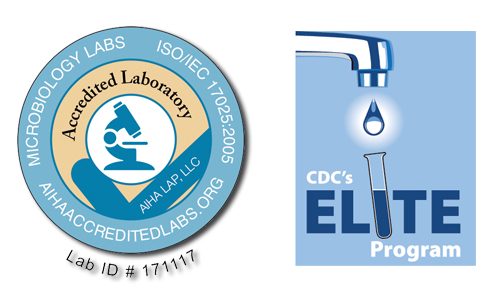Eastern Equine Encephalitis virus [EEE]
Published: September 4th, 2012
Revised: February 23rd, 2023
Eastern equine encephalitis is a rare mosquito-transmitted human illness caused by the Togavirus, Eastern Equine Encephalitis virus (EEEv). It is closely related to Western- and Venezuelan Equine Encephalitis viruses. In North America, EEEv occurs mainly in the coastal region of eastern Canada and along the Atlantic and Gulf coast in the US. Natural transmission takes place between birds and mosquitoes, mediated by the bird-feeding mosquito, Culiseta melanura. However, EEEv may be transmitted to humans through the bites of certain mosquitos that feed on both humans and birds (e.g., Aedes vexans, Coquillettidia perturbens, and Culex pipiens/ restuans complex). Most EEEv infections are thought to have no symptoms; however severe infections often begin with headache, high fever, chills and vomiting, progressing to seizures, coma and death. No specific treatment is available. In highly endemic areas, infection with this virus has been associated with a fatality rate of up to 75%. Fortunately infections in North America are rare, with only 220 human cases reported in the US between 1964 and 2004. In Canada, infections happen mainly in spring in conjunction with birds migrating into Canada from the southern US.
Testing
Mosquito pools are useful to evaluate WNv risk since positive pools tend to occur in specific areas. Seven species or species- groups most strongly targeted for testing are:
- Culex pipiens/ Cx. restuans
- Culex salinarius
- Culex tarsalis
- Aedes vexans vexans/ A. vexans nipponii complex
This test identifies adult mosquitos using morphological identification by stereomicroscopy; however confirmatory identification by DNA sequencing is available, if necessary. Assessment of specimens for EEEv is accomplished by RT-PCR with generic and envelope-specific TaqMan PCR assay.
Sample collection
- Several types of traps have been designed for use in the collection of mosquitoes for vector monitoring purposes. The suitability of individual trap types is generally guided by the application, following the manufacturer’s instructions;
- Traps should be exposed for 24 hr;
- The trap catch should be collected in a transport container, suitably clean screw-top polypropylene jars, according to the volume of the capture; and,
- Collection jars should be wrapped in bubble packing and placed in a transport cooler on blue ice.
Information required
- Prior to sending samples, please contact Dr Arocha-Rosete ([email protected]) to verify proper collection and transport methods;
- Keep a copy of the sample submission form for your records;
- Attach to the samples to be shipped to Sporometrics Inc; and
- Shipment to Sporometrics Inc. should be by by overnight courier on blue ice, and quoting the address specified at the bottom of the page.
References
- Krauss H, Weber A, Appel M, Enders B, Isenberg HD, Schiefer HG, Slenczka W, Graevenitz AV, Zahner H. 2003. Viral Zoonoses: Zoonoses caused by Alphaviruses. Zoonoses: Infectious diseases tranmissible from animals to humans (3rd ed., pp. 6-24). Washington, D.C.: ASM press.
- Zacks MA, Paessler S. 2010. Encephalitic alphaviruses. Veterinary Microbiology, 140 (3-4), 281-286.
- Dimmock NJ, Easton AJ, Leppard KN. 2007. Appendixes: survey of virus properties. Introduction to modern virology (6th ed., pp. 444-479). Malden, MA: Blackwell publishing.
- Pfeffer, M., & Dobler, G. (2010). Emergence of zoonotic arboviruses by animal trade and migration. Parasites & Vectors, 3 (1), 35. doi:10.1186/1756-3305-3-35
- Aguilar PV, Robich RM, Turell MJ, O’Guinn ML, Klein TA, Huaman A, et al. Endemic eastern equine encephalitis in the Amazon region of Peru. Am J Trop Med Hyg 2007;76(2):293-8.
- Lambert AJ, Martin DA, Lanciotti RS. Detection of North American eastern and western equine encephalitis viruses by nucleic acid amplification assays. J Clin Microbiol 2003;41(1):379-85
Laboratory code: EEE
Service options

Dr. Scott discusses the whiskey fungus in the New York Times
Published: September 3rd, 2012
Revised: October 15th, 2012
 Baudoinia companiacensis is a hip, cool fungus that likes booze. It grows in places where there’s alcohol is in the air – around spirit maturation warehouses and even near bakeries – and in the process, it makes a nuisance of itself by turning stuff black.
Baudoinia companiacensis is a hip, cool fungus that likes booze. It grows in places where there’s alcohol is in the air – around spirit maturation warehouses and even near bakeries – and in the process, it makes a nuisance of itself by turning stuff black.
At Sporometrics, we are the world experts on this interesting fungus: we named it, we were the first to figure out how to isolate it, and we’ve developed sophisticated methods to detect it in the environment. We are the only group in the world that can provide these testing services. We’ve also done a lot of research aimed at figuring out how and why it likes booze.
Recently our expertise with this fungus was tapped in relation to a series of legal cases involving residents around spirit warehouses fed up with the fungus blackening their propery. Dr. Scott was interviewed by the New York Times about the biology of Baudoinia and how alcohol is involved in its growth.




